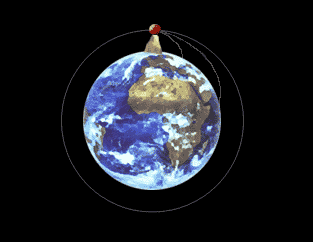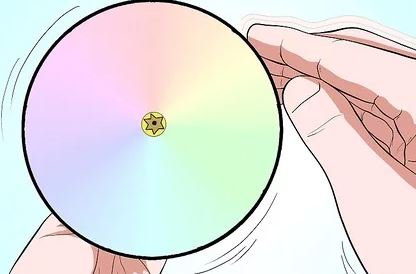Oh dear! The HISTSCI_HULK has been woken from his post festive slumbers and is once again on the rampage. What has provoked this outbreak so early in the new year? He chanced to see a post, that one of my followers on Facebook had linked to, celebrating Newton’s new-style birthday on 4 January. As is well-known, we here at the Renaissance Mathematicus celebrate Newton’s old-style birthday, but that’s another story.
The post is on a website called Wonders of Physics, is the work of an Indian physicist, Vedang Sati, and is titled:
10 Discoveries By Newton That Changed The World
I have reproduced the whole horror show below. Let us examine it.
Isaac Newton is one of the few names that will forever be enshrined in physics history and that too with a lot of glamour associated. Contributions of none other physicist match, his, well, Einstein’s, or not even his!? The following are Newton’s ten most well-known works that changed the world later on.
A strong hagiographical vibe going down here, which doesn’t bode well.
Laws of motion
1. An object will remain at rest or move in a straight line unless acted upon by an external force.
2. F=ma.
3. For every action, there is an equal and opposite reaction.
Newton’s three laws of motion, along with thermodynamics, stimulated the industrial revolution of the 18th and 19th centuries. Much of the society built today owes to these laws.
Remember these are supposedly the things that Newton discovered. His first law of motion, the law of inertia, was first formulated by Galileo, who, however, thought it only applied to circular motion. For linear motion it was first formulated by Isaac Beeckman and taken over from him by both René Descartes and Pierre Gassendi. Newton took it from Descartes. The second law, which was actually slightly different in the original form in which Newton used it, was taken from Christiaan Huygens. The third law was probably developed out of the studies of elastic and inelastic collision, which again originates by Descartes, who got much wrong which was corrected by both Huygens and Newton. Newton’s contribution was to combine them as axioms from which to deduce his mechanics, again probably inspired by Huygens. He tried out various combinations of a range of laws before settling on these three. Sati’s following statement is quite frankly bizarre, whilst not totally false. What about the Principia, where they occur, as the foundation of classical mechanics and perhaps more importantly celestial mechanics.
Binomial Theorem
Around 1665, Isaac Newton discovered the Binomial Theorem, a method to expand the powers of sum of two terms. He generalized the same in 1676. The binomial theorem is used in probability theory and in the computing sciences.
The binomial theorem has a very long history stretching back a couple of thousand years before Newton was born. The famous presentation of the binomial coefficients, known as Pascal’s Triangle, which we all learnt in school (didn’t we?), was known both to Indian and Chinese mathematicians in the Middle Ages. Newton contribution was to expand the binomial theorm to the so-called general form, valid for any rational exponent.
Inverse square law
By using Kepler’s laws of planetary motion, Newton derived the inverse square law of gravity. This means that the force of gravity between two objects is inversely proportional to the square of the distance between their centers. This law is used to launch satellites into space.
I covered this so many times, it’s getting boring. Let’s just say the inverse square law of gravity was derived/hypothesized by quite a few people in the seventeenth century, of whom Newton was one. His achievement was to show that the inverse square law of gravity and Kepler’s third law of planetary motion are mathematically equivalent, which as the latter in derived empirically means that the former is true. Newton didn’t discover the inverse square law of gravity he proved it.
Newton’s cannon
Newton was a strong supporter of Copernican Heliocentrism. This was a thought experiment by Newton to illustrate orbit or revolution of moon around earth (and hence, earth around the Sun)

He imagined a very tall mountain at the top of the world on which a cannon is loaded. If too much gunpowder is used, then the cannon ball will fly into space. If too little is used, then the ball wouldn’t travel far. Just the right amount of powder will make the ball orbit the Earth.
This thought experiment was in Newton’s De mundi systemate, a manuscript that was an originally more popular draft of what became the third book of the Principia. The rewritten and expanded published version was considerably more technical and mathematical. Of course, it has nothing to do with gunpowder, but with velocities and forces. Newton is asking when do the inertial force and the force of gravity balance out, leading to the projectile going into orbit. It has nothing to do directly with heliocentricity, as it would equally apply to a geocentric model, as indeed the Moon’s orbit around the Earth is. De mundi systemate was first published in Latin and in an English translation, entitled A Treatise of the System of the World posthumously in 1728, so fifty years after the Principia, making it at best an object of curiosity and not in any way world changing.
Calculus
Newton invented the differential calculus when he was trying to figure out the problem of accelerating body. Whereas Leibniz is best-known for the creation of integral calculus. The calculus is at the foundation of higher level mathematics. Calculus is used in physics and engineering, such as to improve the architecture of buildings and bridges.
This really hurts. Newton and Leibniz both collated and codified systems of calculus that included both differential and integral calculus. Neither of them invented it. Both of them built on a two-thousand-year development of the discipline, which I have sketch in a blog post here. On the applications of calculus, I recommend Steven Strogatz’s “Infinite Powers”
Rainbow
Newton was the first to understand the formation of rainbow. He also figured out that white light was a combination of 7 colors. This he demonstrated by using a disc, which is painted in the colors, fixed on an axis. When rotated, the colors mix, leading to a whitish hue.

In the fourteenth century both the German Theodoric of Freiberg and the Persian Kamal al-Din al-Farsi gave correct theoretical explanations of the rainbow, independently of one another. They deliver an interesting example of multiple discovery, and that scientific discoveries can get lost and have to be made again. In the seventeenth century the correct explanation was rediscovered by Marco Antonio de Dominis, whose explanation of the secondary rainbow was not quite right. A fully correct explanation was then delivered by René Descartes.
That white light is in fact a mixture of the colours of the spectrum was indeed a genuine Newton discovery, made with a long series of experiments using prisms and then demonstrated the same way. Newton’s paper on his experiments was his first significant publication and, although hotly contested, established his reputation. It was indeed Newton, who first named seven colours in the spectrum, there are in fact infinitely many, which had to do with his arcane theories on harmony. As far as can be ascertained the Newton Disc was first demonstrated by Pieter van Musschenbroek in 1762.
Reflecting Telescope
In 1666, Newton imagined a telescope with mirrors which he finished making two years later in 1668. It has many advantages over refracting telescope such as clearer image, cheap cost, etc.
Once again, the reflecting telescope has a long and complicated history and Newton was by no means the first to try and construct one. However, he was the first to succeed in constructing one that worked. I have an article that explains that history here.
Law of cooling
His law states that the rate of heat loss in a body is proportional to the difference in the temperatures between the body and its surroundings. The more the difference, the sooner the cup of tea will cool down.
Whilst historically interesting, Newton’s law of cooling holds only for very small temperature differences. It didn’t change the world
Classification of cubics
Newton found 72 of the 78 “species” of cubic curves and categorized them into four types. In 1717, Scottish mathematician James Stirling proved that every cubic was one of these four types.
Of all the vast amount of mathematics that Newton produced, and mostly didn’t publish, to choose his classification of cubics as one of his 10 discoveries that changed the world is beyond bizarre.
Alchemy
At that time, alchemy was the equivalent of chemistry. Newton was very interested in this field apart from his works in physics. He conducted many experiments in chemistry and made notes on creating a philosopher’s stone.
Newton could not succeed in this attempt but he did manage to invent many types of alloys including a purple copper alloy and a fusible alloy (Bi, Pb, Sn). The alloy has medical applications (radiotherapy).
Here we have a classic example of the Newton was really doing chemistry defence, although he does admit that Newton made notes on creating a philosopher’s stone. If one is going to call any of his alloys, world changing, then surely it should be speculum, an alloy of copper and tin with a dash of arsenic, which Newton created to make the mirror for his reflecting telescope, and which was used by others for this purpose for the next couple of centuries.
Of course, the whole concept of a greatest discovery hit list for any scientist is totally grotesque and can only lead to misconceptions about how science actually develops. However, if one is going to be stupid enough to produce one, then one should at least get one’s facts rights. Even worse is that things like the classification of the cubics or Newton’s Law of Cooling are anything but greatest discoveries and in no way “changed the world.”
You might wonder why I take the trouble to criticise this website, but the author has nearly 190,000 followers on Facebook and he is by no means the only popular peddler of crap in place of real history of science on the Internet. I often get the feeling that I and my buddy the HISTSCI_HULK are a latter-day King Cnut trying to stem the tide of #histSTM bullshit.